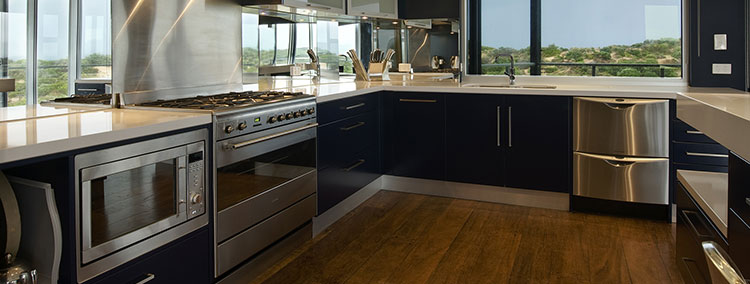
The dishwasher is supposed to make it easy to clean your cookware, but you should be conscious of the utensils you put in your dishwashing machine.
If you have pots and pans you would like to clean, you must be asking, can you put pots and pans in the dishwasher? According to dishwasher repair professionals, this depends on the type of material used in making the pots and pans.
Copper pots and pans
If your cookware is made from copper, you should avoid putting it in the dishwasher as you risk tarnishing the pot’s color and shine. To maintain the look, wash the copper pots and pans by hand.
Has your pot acquired a burnt bottom? Sprinkle some salt on the affected area and cover it with white vinegar. Let the mixture sit for fifteen seconds then proceed to scrub.
Stainless steel pots and pans
Experts report that it’s safe to expose your stainless steel pots and pans to the dishwasher, but you need to exercise some caution. Dishwashers come with excessive humidity that can corrode the metal, but when you wash with hand, you can control it as you can control the water temperature.
So when you are handling stainless steel pots and pans, you are better off washing the cookware by hand. Only consider using the dishwasher if the manual says you can safely do it.
When using the dishwasher, ensure there is enough space between the pots and other items inside to prevent scratching. Enough space also ensures the dishes get properly cleaned and dried.
Aluminum pots and pans
It’s always wise to avoid cleaning the pots and pans using the dishwasher, but if you go through the manufacturer’s manual and it says the units are dishwasher safe, you should go ahead and wash them in the appliance.
When cleaning the pots and pans, remember that the aluminum material has the propensity to scratch, so you should remove all the cookware and cutleries before you begin a dishwasher cycle.
You should note that when you regularly clean the aluminum pots and pans using the dishwasher, it’s common for the pots to develop a dull finish. To retain the gleam for a long time, alternate it with handwashing from time to time even if the manual says its dishwasher safe.
Non-stick pots and pans
It’s a common practice for manufacturers of non-stick pots and pans to recommend the dishwasher for cleaning their pots and pans. While this is the case, many homeowners have reported that the process is too tough for the pots and pans, so you are better off avoiding it.
The best way of keeping the pots and pans in top shape is to wash them by hand with a small amount of soap. When you do this, you ensure the pot retains some oil, which keeps the pans non-stick.
In addition to the pots losing their non-stick quality, they also hold a lot of odor, which is unpleasant.
During a dishwashing cycle, the pots tend to knock every item around, and this has been shown to loosen the handles.
Cast iron pots and pans
For a long time, cast iron pots and pans have been considered as dishwashers unsafe, so you should never put them there. The interior of the dishwasher can be hot as well as wet, which isn’t good for the cast iron cookware.
When you put the pots in the dishwasher, you wash away the protective coating leading to rust. To avoid this, you should wash your pots and pans by hand.
What should you put in the dishwasher?
As you have seen, the pots and pans you put in the dishwasher depend on the material used in making them. To ensure your appliances are safe, scrutinize the manufacture’s manual.
To ensure the dishwasher gives you an excellent service, keep it in top shape. This calls for you to clean it regularly. You also should regularly inspect it for any flaws and fix if present.
Sometimes even dishwasher safe pots and pans get damaged, so to keep your appliances in good condition, appliance repair Springfield professionals recommend you clean them by hand.
While this will take most of your time, it will preserve the lifespan of the pots and pans.
The post appeared first on Express Appliance Repair